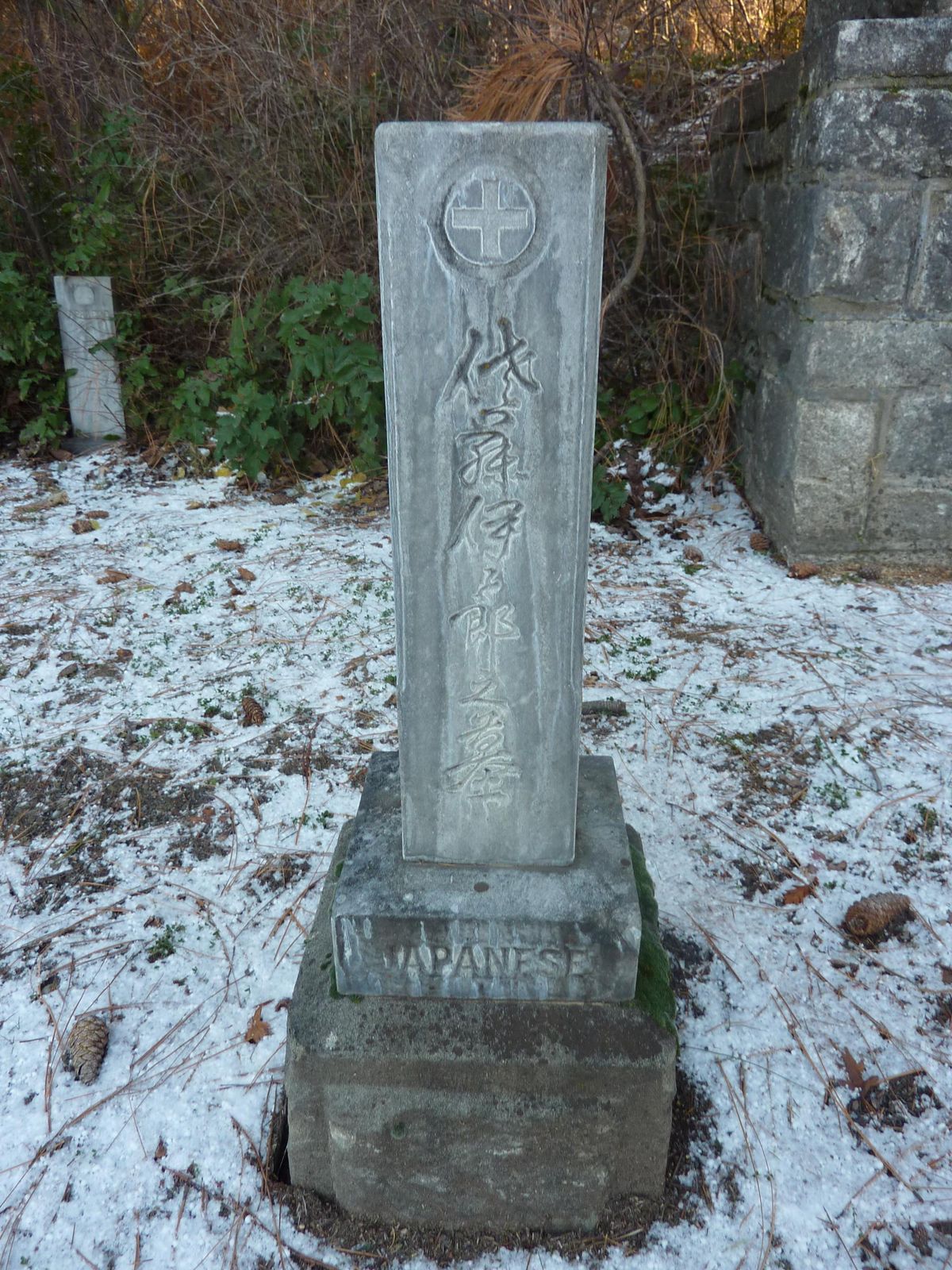Landmarks: Greenwood monuments, lawns honor Japanese heritage

Spokane native Roy Shiosaki served as a rifleman with the U.S. Army’s 324th Infantry, 44th Division, L Company, in France, Germany and Austria during World War II.
He was the only soldier of Japanese heritage in his unit. His commanding officer was concerned that his all-white comrades “might not have his back,” said Shiosaki’s daughter Joanne Shiosaki, assistant director of student media at Gonzaga University.
“Dad was an American even though he was treated like the enemy by a lot of soldiers he served with,” she said. “It was important to him to have their respect, so he turned down the offer for an assignment behind the lines and served in the trenches.”
And so when he died last year at age 95, his family buried him at Greenwood Memorial Terrace. His grave marker reflects the military service of which he was so proud.
While those of Japanese heritage are buried in cemeteries throughout Spokane, there are two lawns reserved for them at Greenwood Memorial Terrace, thanks in large part to the work of the Spokane Japanese Cemetery Association. The oldest is the northern part of Lawn 2, known as the Bench on the second tier of the cemetery, according to Dave Ittner, chief operating officer of the Fairmount Memorial Association, Greenwood’s parent organization. Records show that the earliest Japanese burial there was in 1901, but that some death dates were as early as 1891, suggesting they were first interred at a different cemetery and moved later to Greenwood.
In the early 1990s, in an interview with Spokane journalist Dorothy Powers for her book “Heritage from Heroes: Spokane’s Dreamers and Builders,” Ed Tsutakawa, an unofficial historian of Japanese history in Spokane, tells an interesting story of how a few Japanese men and women worked with Greenwood more than a century ago in creating the Japanese section and, with the women putting in most of the time and labor, they “… worked to collect money to pay for land and funerals where Japanese could be buried together.”
Tsutakawa, a Spokane artist and businessman, was one of the prime movers in creating the Spokane-Nishinomiya sister city relationship, out of which came the Nishinomiya Japanese Garden in Manito Park and eventually establishment of Mukogawa Fort Wright Institute.
Some of the oldest burial markers have on them the vertical tategaki traditional Japanese script, but there is often one word written horizontally in English. One report indicates that because of the prejudice faced by the Chinese immigrants who arrived in the area before the Japanese, “the Japanese made sure to include the word ‘Japanese’ in English on their headstones to keep people from desecrating them.”
Just after World War II, because they were running out of room on the Bench and because there was still enough racial tension to warrant a separate section for Japanese, a section on the third tier at Greenwood was established, said Keiji Shimizu, president of the Spokane Japanese Cemetery Association. It is known as the Cherry Blossom Lawn because of the cherry trees located there.
There have been 360 interments at Cherry Blossom, with space remaining for 213, Ittner said. And 218 individuals are buried on the Bench, with space remaining for 15.
On the Bench is a tall monument, and at Cherry Blossom there is a broader monument that was designed by Tsutakawa (1921-2006), who is buried just in front of it; both monuments are dedicated to those of Japanese heritage who came before. The third Sunday of May each year the Bosankai ceremony is held, one year at one monument and the next year at the other, to honor the Issei (first generation), Nisei (second generation) and all those who followed.
The Spokane Japanese Cemetery Association has purchased a large number of spaces at the lawns and offers them to community members at a discount.
Buried in both lawns are some of the Japanese community’s most distinguished citizens, said Shimizu, as well as those who simply lived their own good lives in the area. Among them on the Bench is Suye Muramatsu (1871-1962), a founding member of the Spokane Japanese Cemetery Association. Buried on the upper tier is Beverly Saruwatari (1947-2009), a teacher at Hamblen Elementary who was Spokane School District’s Distinguished Educator in 1988 and recipient of the Washington Award for Excellence in Education in 2001. Also buried there is Denny Yasuhara (1926-2002), a Garry Middle School teacher who served as national president of the Japanese-American Citizens League and worked toward the signing of the 1988 Civil Liberties Act, in which the U.S. government granted reparations to those of Japanese ancestry sent to detention camps during WWII.
At the east end of Cherry Blossom is a monument to the 112 Nikkei (Japanese emigrants and their descendants) who served in the U.S. armed forces, including 15 who were killed in action. Those who died serving their country during WWII – William Mizukami, Tom Haji, Eugene Amabe, Isao Koyama, Masai Nakamura, George Sawada, Toll Toru Seike, Theodore Watanabe, Mon Takahashi, Edwin Fukui, Gordon Yamaura, Frank Shigemura, Jimmy Shimizu and Seturo Yamashita. During Vietnam – Brian Mukai.
Not too many paces from that monument is the grave of Roy Shiosaki, who, while in uniform, attained the rank of sergeant and earned a Combat Infantry Badge – an American soldier who served his country with honor.